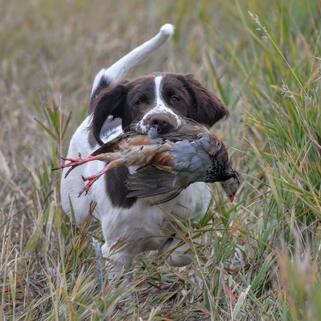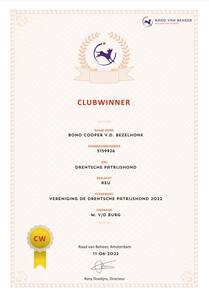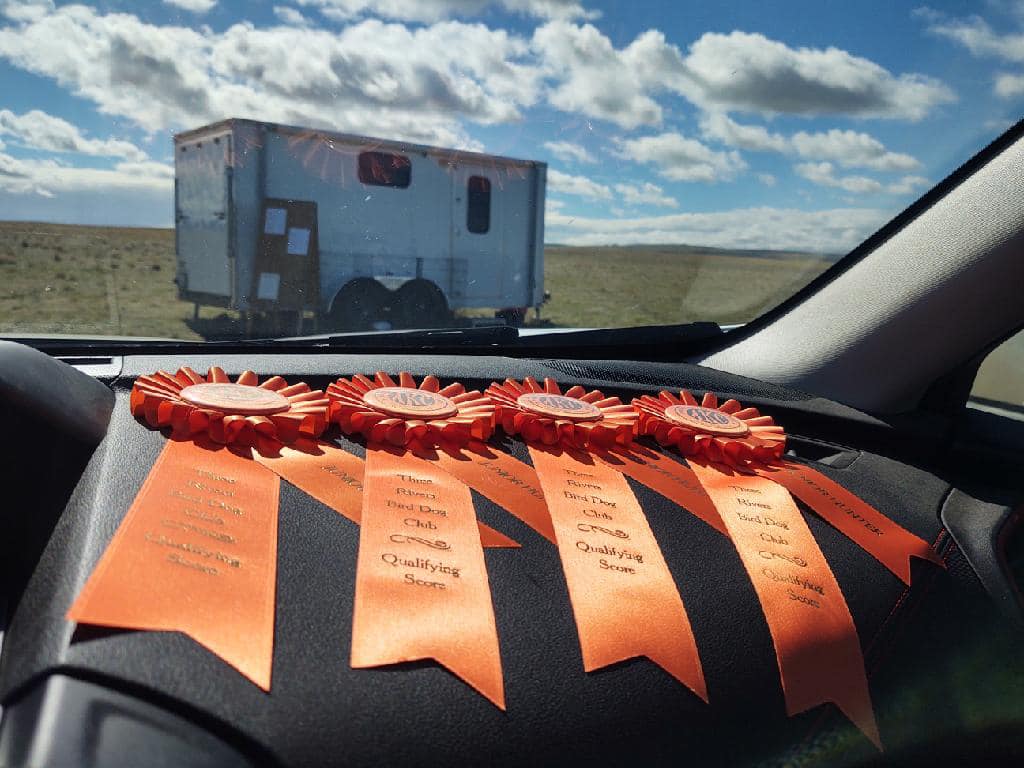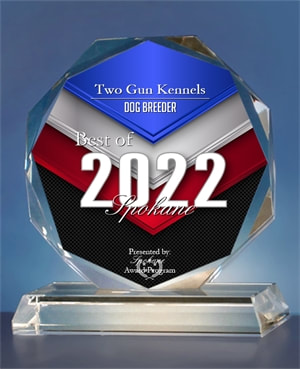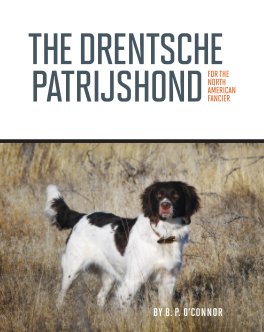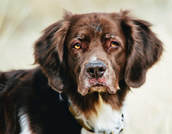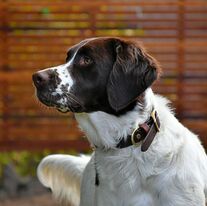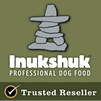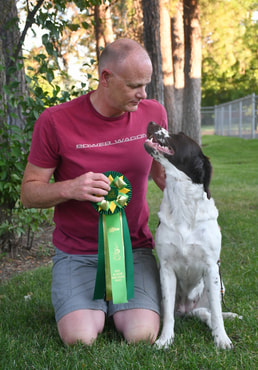 Last weekend I had the pleasure of participating in my first ever IABCA Show with Ila. The IABCA has a unique format where they limit the number of entries, so each exhibitor gets some one-on-one time with the judge. Also, the judge will provide a limited written critique on your dog against its breed standard. Judges are both foreign and domestic, some are new, others may have quite the resume! The IABCA format allows you to show your dog a lot, if you signed up for everything that your dog is eligible for. Our two days were composed of four shows, two each day! Judges evaluate an entire Group, e.g. Sporting group, one breed at a time, then judge the group as a whole. With a brief lunch break, Groups are rotated to a new judge and then you show again. At the end of the day the first show gets all its "Best in Show" dogs run, then the second show follows soon after. It makes for a full day of dog showing! On day two, with shows three and four, everyone is rotated again, so your dog gets seen by a new judge. The only difference is there will be a few special categories run, and then at the very end any dog who earned a Best in Show placement from any of the preceding shows can compete to see who won the whole enchilada! 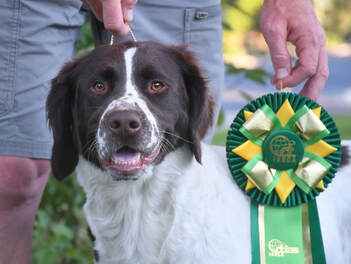 For a rare breed there is no other way to build that much ring time! In all Ila was shown seven times on each day (in the blazing heat I might add) and should have been shown at the final event, but I was unaware of her eligibility to do so. The IABCA has multiple categories which are treated as their own individual show. I find this to be interesting, and depending on your situation, you can enter your dog under multiple categories and squeak out an extra show and the possibility to win! The downside for a rare breed like the Drent (or super low entry breed like the Spinone), just as in conventional showing (AKC or UKC), judges truly have little or no knowledge of your breed. Most assuredly they have not taken Judge's Education for the breed! Sure, they have the breed standard at their side, but that alone isn't sufficient to make a full and legitimate judgement. Of interest Ila's judges stuck to what they knew - movement. Then quickly perused the standard and went back over certain aspects of her during the write up phase to see if she matched what they believed they had read. All in all, most observations made were pretty good, and mostly accurate. There were a few observations that were a bit comical. For example, one judge would have liked to see Ila with more muscle! In reality, she is the most well-muscled female Drent I have ever seen. She has surpassed her mother in that department, which is saying something. I'm not sure what she was expecting, but I took a moment to explain to the judge that Ila was a hoss for her breed. The other item that sticks out at the moment is the judge would have liked to seen more hair on Ila's ears... I of course explained to her that what she was seeing was a correctly groomed Drent, and that Drents with shaggy ears were in fact ungroomed savages living at the local homeless camp - this got a lot of laughter from her. 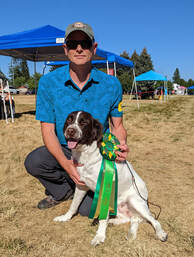 In principle you show your dog like you would at any other dog show, but you get face time with the judge and a critique. Dogs are rated on a scale of three to one (one being the best) on their overall conformation to the breed standard. The judge can grade some, all, or none the top grade and so on. Still there will be only one winner from each breed, with placements of first through third... At the group level, be it "Bred by" or regular, Dogs can be placed first through third with the first-place winner being able to go on to compete in the Best in Show. There are more classes to compete in, and each class is treated as its own show, and consequently there are more opportunities to win rosettes at the end of the day. If your dog receives good grades, you can apply for IABCA titles. If anything, this is the one area the IABCA could be more protective of. The number of top grades needed is surprisingly low. If you have a nice dog, odds are it will grade well enough, and therefore become eligible in short order for a title. It then should go without explanation, Ila qualified for her International Champion title, and only needs one more point for her second IABCA title. The titles are not what will bring me back though. Overall, the shows were well organized and ran efficiently. Their group awards, little medallions, are a tad outdated/silly. But their Best in Show rosettes are quite nice. For me it will be the ability to put my dog in the ring and have fun talking about her and educating others about her breed. There were plenty of people excited to see and pet their first Drent!
3 Comments
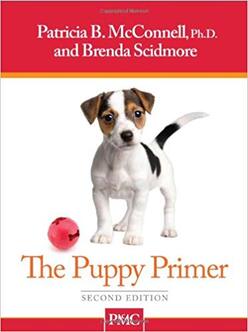 We used to send this by email to our clients many months in advance, now it lives here getting updated from time to time and the link finds its way to your inbox. Yes, we know, it could be a year or more before a new Two Gun pup will cross the threshold into your home. Which means, right now is a wonderful time to start looking into different training options and methods, as there is little pressure. You can read, ask questions, seek out advice, find a local trainer: observe training sessions, etc. and really see what is going to work for you. Making these kinds of decisions once you have the puppy is a whole lot like attempting to fix an airplane while it is in flight...generally not advisable. So here it is, I have dusted off the Recommended Reading list yet once again. What do these books have in common? They are in tune with modern canine behavioral science vs. the old school ways. We believe in working smarter and not harder whenever possible and these resources will certainly help you to do so. Don't Shoot the Dog! The New Art of Teaching and Training, by Karen Pryor The Puppy Primer, by Patricia B. McConnell - for that matter, any Patricia B. McConnell book on training/dog behavior How to raise a puppy you can live with, by Clarice Rutherford When Pigs Fly! Training Success with Impossible Dogs, by Jane Killion, founder/creator of Puppy Culture. This book picks up where we left off with the Puppy Culture protocols, we used with our puppies and isn't just for "impossible" dogs! However, those who are intending to develop your Drent for field work please disregard pages 80-84 her ball & tug games run contrary to your aim. Dog Sense, by John Bradshaw The Genius of Dogs, by Brian Hare Absolutely Positively Gundog Training, by Robert Milner. To learn the mechanics of "Positive/ Force Free Training" and developing a retrieve based on stimulus control. The Drentsche Patrijshond for the North American Fancier, by B. P. O'Connor Since we have you here in the mindset to learn and read. In short, the "early" pediatric spay/neuter is being strongly implicated/tied to joint irregularities, tendon injury, and even increased the risk of many cancers, amongst many other developmental issues, please take some time to review these scientific articles:
There are also some great training resources on the internet:  Leerburg / The Michael Ellis School for Dog trainers: Michael Ellis is considered by many to be one of the World's Greatest dog trainers. He uses LIMA principles to achieve incredible performance from a wide range of dogs for all types of dog sport. Michael's system covers a wide range of topics and is both highly effective, humane, and applicable to all aspects of canine sports. McCann Dog Training: I am a big fan of McCann as they offer a wide range of well put together videos covering all manner of training challenges using Rewards and Markers, and even offer online courses here. Dog Training by Kikopup: Run by Emily Larlham, owner operator of Dogmantics. She shares her impressive skill with easy to learn and follow videos for the regular person. Solving unusual problems suddenly got easier, if not surprisingly fun using her methodology. Higgins GunDogs: Mr. Higgins has used his experience and background in training falcons for the benefit of gun dogs. This method hinges upon a dog's natural cooperation with his boss/co-hunter. The Higgins method isn't exactly 100% fully force and pressure free as its creator pitches. However, the Higgins Method presents stress to the dog in a minimalist and constructive fashion and is without question the best overall and most humane, system for training and managing a high drive gun dog! We use the Higgins Method with all our dogs. Regular visitors to this spot will note I have included Standing Stone Kennels, removed them, reinstated them, and now note they are off again... They have been moving in the right direction. It is important to note that SSK pays their bills by producing content on a rapid production cycle. So, it is important to recognize that the quality of their content varies widely. A knowledgeable trainer can easily sort the wheat from the chaff whereas the novice may not. Therefore, my best advice is to use their content with objective care, or leave it be if you don't know what good training looks like.
How do you make long arranged and much anticipated breeding plans sweeter? Well, you have the stud you selected over two years ago win big! Bono Cooper van de Bezelhonk, aka, Bono recently won the 2022 Vereniging De Drentsche Patrijshond Championship Club Match, #1 of 106 Drents present for the event! We couldn't be happier, or prouder!
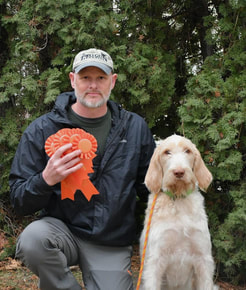 I had always imagined running a dog or two in AKC's and/or NAVHDA's hunt tests. But due to my career, the ridiculously long hours I used to work, and living overseas or other locations too far off the beaten path I never got to do any of it. So now that I have the time, it seemed appropriate to try it out. I fully understand why my mentor isn't a fan of these things, and to be honest I've learned these avenues aren't really my jam. Having said that the part I do like is being able to showcase a field dog that was "trained" using Force-Free techniques. So why do them? I hope to open a few eyes to the possibility of using modern techniques to guide (train) their hunting dog. Not only can a field dog can be trained using humane means, but exceptionally high levels of performance can also be achieved without the need to "take any hunt" out of your dog - an expression I sadly hear all too frequently in and around this type of venue. With that being said, we signed Fizzy up for a Double, Double being held outside Kennewick WA, and I went. She did a great job, locating on average 4 birds on each outing, with only 5 to 10 minutes in the 'bird field' no less. She ran well, made nice stylish Spinone points, and held each one until I could get to her. In some cases, this was an extended period as I was on one side and she the other of the bird field. Fizzy went 4 for 4 with great ease as a yearling. If her retrieve was a bit tighter, she would be ready for the AKC Senior Hunter test and just a few heart beats away from Master level! So as part of her journey we will help guide her in making a few improvements in her performance. She has been both interesting and fun to work with so far. I expect to have a lot of fun with this dog once our flight pen gets filled with birds here soon! Afterall, it's about the dog(s) having fun with them and getting out of the house once in a while. 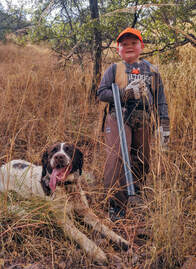 You might think with six weeks of hunting lined up we would be wiped out and ready to come home by the end. If you did, you would be mistaken. I did have to miss a day of hunting to retrieve Robert for his Christmas break visit with us, and we elected to take the following day off to do family things. We did have a few days of heavy rainfall threatening to take a day away from us, but it all worked out and we made at least a short hunt work somewhere. As mentioned, it was a big trip, with 6,606 miles driven in total, 3,498 of which were put in over 39 days of hunting. The dogs smashed 165 pounds of dog food and we hiked 180.44 miles in the pursuit of these little birds. We made new friends, had some good times with old friends.
It was clear many of the coveys had late hatches. In the early season, several birds that had been harvested were surprisingly small, covered with copious amounts of pin feathers and even bare chests! Oh my, if only we had been able to “shoot and release”, some were so small. This only reinforced our normal hunting practice of hunting only covey rises, doing what we could to deliberately leave singles and flushed birds be where they were and move on to the next. This tactic worked well for us overall, and we managed to locate 83 unique coveys of Mearns quail during our time. The dog-by-dog report:Fowler: did his typical work, which is to say, he did a nice job. Sure, he’s almost twelve now and he’s slowed down a bit. But his nose still works, and if he smelled them, he had them. He found his fair share of birds, made nice points, and of course did a fine job of locating and retrieving downed birds. Powder: had another great Mearns season even though she started this season very overweight and out of shape due to the late season Singleton she gave birth to. We had also hoped to work her using the Higgin’s Method to improve a few elements of her performance, namely steadiness after the flush/shot, but that too was sidelined by a bad shoulder injury and then her pregnancy. Despite losing that opportunity Powder crushed her eighth Mearns season. Moreover, she has done a fantastic job of teaching our other dogs the ways of the Mearns given her deliberate and consistent style of working and reliable points. Tule: had a banger early season and upon retrospect we made some errors that didn’t help her end on the note she deserved. Tule ended her summer wonderfully steady and cooperating with our other dogs with a remarkably high level of fidelity. She was a total rock star for me while guiding at Sage Canyon Outfitters. The key was, we believe, she hunted with our dogs. Dogs she knew and trusted. Dogs managed in our way or the Higgin’s way. We thought she was ready to hunt with others, and well, we were wrong. As her Mearns season progressed her performance slackened. It was unfortunate and it’s on us 100%. We will get right by her this coming summer! Ila: man, she had a rough go of it. She had a disproportionate number of hunts that held little to no birds. We even back hunted a number of those areas with her mother to again come up empty handed. Her performance was good, she did her job. But after so many dry outings it seemed to affect her confidence towards the end. As a side note, I so desperately wanted to capture video of her work for my mentor, and somehow it translated to my worst work with my GoPro, ever. And that is saying something. A videographer I am not. I recorded countless hours of the inside of my pack mostly… Jenna did begin to record us occasionally with her phone towards the end. Ila’s feet are as if set in concrete on a covey rise, and after shots are made. She even caught a quail on a covey rise without moving a foot! Ila also did great work on her ‘alright’ queue, which is the opportunity to relocate or even flush when given the queue, little more than a step or two mostly just to observe the bird flying away – just fantastic. We were frustrated for Ila. Overall, she did the work one would expect when there was work to be done from dog that will hopefully soon become a recognized Higgins Gundog. We intend to expand upon her Field skills this summer, again using only Higgins/LIMA methods. I am excited! Fizzy: now here is our success story. We started her with the Higgins System as a young pup, and she did great. Maybe a little too well. She very quickly and easily became steady to release with essentially no effort. Then she kinda seemed to stop caring about birds. With that we backed off and focused on letting her be a puppy. Not that the Higgins Method uses high pressure or the use of any lightning to get the job done. It just happened to be too much too fast for her, and we needed her to ‘love’ birds more. Fizzy started her Mearns season following, but not dogging our more experienced dogs. Due to Powder & Folwer’s pronounced stalking behavior, and me making improvements in consistency with my handling she just began to naturally co-hunt with and back them. From her earlier exposure, she knew putting up birds never pays the bills. She was a killer on singles, the only dog we intentionally hunted on flushed birds. As season progressed, she began to work more independently until one day I blew her off, opting to pay attention to Fowler & Powder. Fizzy had the covey, but overcooked it, and found herself in the middle of them when they flew. She stood there and watched them fly. As the birds flew off, I called her over and praised her for returning. After that, she knew the deal with coveys. When in doubt hang back and point. She went on to have a killer puppy season and we look forward to finishing her out the Higgins Way this summer. My mom and son visited for the holidays; we did some cool stuff and saw lots of rainbows. I caught a flushing bird in my hand! It was a good trip, and it all went by far too quickly. We are already looking forward to our return. Until then take care,
Brian & Jenna 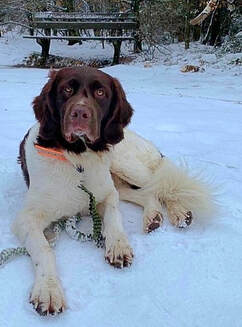 Yaris a newly crowned Beauty Champion of Belgium Yaris a newly crowned Beauty Champion of Belgium Well, it is done. Our second shot at producing a litter of pups using imported frozen semen. We learned a great deal last summer, and we did our best to apply all the lessons learned. Let us now hope it pays off, because this is an expensive endeavor both emotionally, and financially! Ila ovulated sometime late on the 24th-ish based on the test results. So, we had her bred on the 27th, 28th, and the last shot was just completed this morning. Ila ended her hunting season in excellent condition, and at a healthy weight. We switched to Inukshuk Pro a year ago and have strong results for the dogs with it. Normally we battle weight loss during hunting season, but this is now a thing of the past with this food. While this may seem like a small thing, she started her heat cycle within a few days of our return from 6 weeks of non-stop hunting in Southern Arizona. So, we aren't playing catch up to get her up to a healthy breeding weight. Yaris' frozen semen arrived in perfect shape, thawed perfectly, and was in the exact condition his semen report indicated. No surprises or complications, which is always a welcome addition to such a situation for all. Ila did her part and was super compliant, allowing all the handling and manipulation needed to pull the procedures off like a real champion. Each one of the three procedures went off without a hitch - textbook perfects each time! So, whatever it is that you do to create good providence, we kindly ask that you begin now, if you haven't already done so. Products tested: Wrangler RIGGS Workwear Ripstop Ranger Cargo Pant, Pyke Gear Northcutt Upland Briar pant, Cabela’s waxed/oiled Brush pants, Filson Oil Finish Double Tin Cloth Pants, Orvis Upland Softshell Pant, and Filson’s Shelter Cloth Brush Pants. Disclaimer up front. No one asked me to write this, and possibly there is one manufacturer who would wish this to be unpublished the way my review on their website was. By that you may have ascertained no one gave me any of these pants, I purchased everyone one of these with my own hard-earned cash and used each pant for at least one full upland season if not more. Meaning at minimum I have a minimum of 85 to 100 days or so wearing each of these pants in hunting, training, and/or hiking situations. I don’t think anyone cares about a review done on any product that the tester has had only a weekend of exposure with. I will rate each pair on: Protection, Packability, Comfort, Durability/Repairability, and miscellaneous factors that may be unique to a particular pair of pants that significantly affect its usability for better or worse. Then I will rate each pair as an overall value. 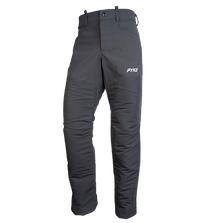 Pyke Gear Northcutt Upland Briar pant Protection: 1 of 5 Packability: 5 of 5 Comfort: 5 of 5 Durability/Repairability: 2 of 5 Overall Value: 1 of 5 Coming in DFL. These are expensive pants coming in at a whopping $250 full retail. Pyke recently cut the price to $180, but this didn’t increase the value proposition. Let me tell you why. When you order your Northcutts’ you will receive an email from Mr. Pike himself, offering to answer any question you may have, or offer assistance as appropriate. I was impressed. My pants arrived, and again I was impressed, but also concerned. These pants are super lightweight, and they run large in the waist. I reached out to Mr. Pike regarding fit, and never heard from him. My Pyke’s became my go to training pants due to their ability to handle cold mornings and still manage hot temperatures towards the end of each training session. As long as I wore a belt, these pants were rock stars, and I couldn’t wait to take them hunting. As a note, the front pockets are rather shallow. I haven’t lost anything I have put into them, but then again, I am paranoid whenever I put something in them and check repeatedly. For early season Sharptail in Montana these bad boys were pretty sweet for reasons already stated. The first chink was their extreme light weight and open boot cuff. Dense grass caused the pant leg to ride up and the fantastic stretchy material showed its first downside as well, once something was pulled in, the material just ate it and deposited crumbs all up and down my legs, into my socks and boots – boo hiss. But okay that can happen with other pants, and we’ll get to that down the line here. Still, I was enjoying my Northcutts for the most part, then came Eastern Washington Pheasant season. My wife and I hunted a ditch filled with thistle and honestly it turned into the worst field experience I have ever had. The spines penetrated the “protective” facing material then was consumed by the stretchy comfortable inner material and the result was wearing a pair of pants made from chopped up Brillo pads. My legs had been mauled by thistle crumbs, my socks and boots filled with them as well. Each step was a nightmare. I drove home in my underwear. Even after washing and drying with several tennis balls it still took over an hour to hand pick all the pokeys out. Later I took these pants to Arizona to hunt Mearns quail. Everything in Mearns country wants to hurt you, and all I can say is the more protection you need, the less these pants give. You will be left with bleeding scratches from catclaw, and if there is a sharp pokey thing you don’t want to be a part of, rest assured, you will feel it and there is a high probability you will be gifted with one or more scabs from the encounter. Also of note, the interior of the pant cuff will attract gobs of grass awns, cactus spines, and so forth. Why is this so important? Well, if you don’t take the time to manually remove them at the end of a use, they will still be there after a wash and be deposited your boots and/or clean socks the next time you wear them to walk. Gifting you the start of a walk with something pokey someplace in your sock and/or boot – yay! Additionally, the base pant material has proven to be highly susceptible to abrasion, pills easily and thins rapidly while doing so. This pair does not yet have a hole worn through yet, but where my Final Rise rests there is a dollar bill sized area primed for failure. Lastly, I wrote a product review on the Pyke website since Mr. Pike will not actually write back to you. He did reach out after that. We spoke, he claims to be building a prototype for me to test. Shortly thereafter my review vanished from Pyke Gear’s Northcutt page. I think that says volumes about what is going on there. 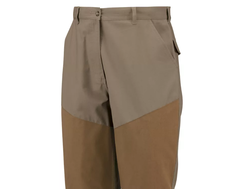 not these, but just like them, but soaked in oil not these, but just like them, but soaked in oil Cabela’s waxed/oiled Brush pants Protection: 4 of 5 Packability: 1 of 5 Comfort: 3 of 5 Durability/Repairability: 3 of 5 Overall Value: 4 of 5 Second to last. I’m not even sure these are made any more, but I wore them and killed them, so they need to be part of the pack in the event you might find something similar on the market. I recall these things costing less than $100 bucks and more than $50. They sure looked the part, and the oil was easily felt. You are just supposed to slap them on and wear them, no washing. So that is just what I did. The first several wears were like wearing pants made of grease-soaked paper towels – you know the kind. Imagine frying bacon strips on a Saturday morning, when you have determined a strip is ready you carefully lay each one out on a paper towel to absorb the excess grease. I imagine Cabela’s sorted through everyone’s trash for a generation and made these pants from those grease-soaked towels. You are welcome. If you stick with them, it does get better, but in your first few showers your legs will be fully waterproof as they will be coated in whatever material they soaked the pants in - so you have that going for you. They are also incredibly hot until the finish wears in. For packing, you must put them into a plastic bag before you put them in your suitcase if you would like to avoid staining everything these pants touch. Like Pykes, these pants could ingest grass up into the legs, easily solved by dropping trou mid-field and pulling everything out. The break in on these pants isn’t for the faint of heart but if you made it you were rewarded with a decent and protective pair of pants for a reasonable amount of money. The cotton material these are made from lasts until it doesn’t, so unless you eagle-eye holes and such one day they will go from seemingly fine to looking like you lost a fight with a badger. On the other hand, you will look like an Old Timer who has really put the miles in with the heavy wear these pants will show in fairly short order. 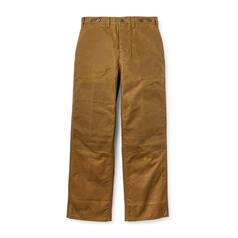 Filson’s Oil Finish Double Tin Cloth Pants Protection: 5 of 5 Packability: 1 of 5 Comfort: 3 of 5 Durability/Repairability: 5 of 5 Overall Value: 4 of 5 Fit for a post-apocalyptic world, so as long as you need not run from anyone or anything - ever. I paid about $190 for mine several years ago. These pants are brutes! They are heavy, can be hot, and are thick. Similar to the Cabela’s pants already discussed you have to protect your other garments you pack from these pants due to the oils impregnated into the heavy weight cotton canvas of these pants. Also, these guys are thicker than two pair or three of any normal pair of pants, if you are limited on space these bad boys are not your friend. If you are hunting in the cold, these pants might be welcome, but for early season prairie birds you will regret wearing them. The boxy cut and extreme weight can also make serious hill climbing a mildly uncomfortable chore. The legs are the most open out of all the pants tested in this review and are susceptible to grass intake. On the upside, they will pull grass to the top, so reaching in and pulling the offending piece of prairie out through the top isn’t a big deal, and if you are hunting in mixed company you don’t have to disrobe in the field as an added bonus. Possibly the single greatest issue I have with these pants is the weight paired with the studs for the suspenders. I must use a belt when wearing these pants to keep them up. The belt then presses the studs into my hip bones, which after a few days can lead to deep bruising that lasts for a week or more. The only way I have been able to mitigate this is by wearing suspenders with heavy gauge leather buttonhole ends. This has proven to keep the inner part of the stud from grinding relentlessly into my hip bones. Repair is easy if you happen to catch a snag on barbed wire, and it seems as far as wear goes, they may outlast me. 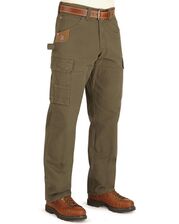 Wrangler RIGGS Workwear Ripstop Ranger Cargo Pant Protection: 4 of 5 Packability: 4 of 5 Comfort: 3 of 5 Durability/Repairability: 3 of 5 Overall Value: 5 of 5 for the 2020/21 season I was looking for a way to not spend a lot of money to be protected in the backcountry, so I gave this unlikely pair of pants a shot. If I recall correctly, I paid $55 bucks at my local ranch store for them. For money these really are hard to beat. They offer no protection from water or moist grass, so use gaiters. Like the Cabela’s pants they wear secretly and suddenly holes will randomly begin to appear towards the end of season in high wear areas. The upside is the wear isn't excessive. You could reinforce/repair these I suppose if you were careful to inspect them after each wear. They do have a boxy cut like Filson’s double tin, but the lighter weight fabric makes it less of an issue, so how much that affects you will likely be up to how you are built. For me it wasn’t awesome, but it wasn’t terrible either – just not my most comfortable pair of pants. The knees are reinforced, and Wrangler has left a part of that reinforced patch unsecured to allow for a little more flexibility. If you have to go under a fence or kneel down in the dirt to retie your boot, sometimes these will pick up sand and dirt. This can be concerning at first, but nothing a hearty pat can’t resolve. All in all, in a pinch I’d use them again. 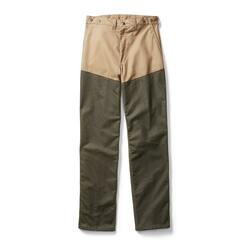 Filson's Shelter Cloth Brush Pants Protection: 5 of 5 Packability: 4 of 5 Comfort: 4 of 5 Durability/Repairability: 5 of 5 Overall Value: 5 of 5 I used a pair of these bad mammer jammers for fourteen years! Yes, you read that right. 14 years. Man, people loved to hate them, telling me how awful they were in one way or another. Never have I had so many people so eager to share their unsolicited thoughts on any piece of gear I have used in fifteen years. Meanwhile they kept buying pants. I just sewed a new patch on. I sent them back to Filson twice for seam repairs. They did exactly what they said they would do, and my pants came back fully reinforced and put back into service. When wear appeared, I was able to patch the area with ease and resume wear. In fact, I harvested chunks of material from that pair of Cabela’s pants to use as patch material for my beloved Filsons’. I sewed a leather cuff at the bottom early on, and I walked thousands of miles in them. By the end of last season, the material had become thin enough I could feel a cutting breeze through them – still they offered full protection from everything Arizona could throw at them. These pants are old school and don’t have a few features, like a crotch gusset, that could be all that is needed to improve fit and how they allow you to move. Even so, they wore more comfortably than all the pants listed here to this point excepting the Pyke Northcutt. For early season hunts, I simply learned to not wax them up heavily, or only below the knee, and that helped the pants to run cooler. Full disclosure I bought my pair on close out for $55 bucks! Which really made mine the ultimate value. I do think it’s rather obvious even if I had paid full price they were a great overall value given the length of service I got from them. Still if I were to spend $250 on a pair of brush pants again these are what I’d spend my money on. Nothing else has come close, or has it? 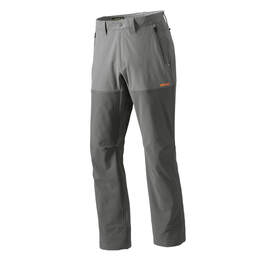 Orvis Upland Softshell Pant Protection: 4 of 5 Packability: 5 of 5 Comfort: 5 of 5 Durability/Repairability: 4 of 5 Overall Value: 5 of 5 The “untimely” death of my Filson’s prompted me to look towards some of the high-tech pants on the market and as you well know I bought a pair of Pykes, and these. To be honest at first, I was smitten by the Pyke pants and this pair of pants may have remained band new for another season until the lack of protection issues arose. Sure, I wore these infrequently during the summer while training, I forgot about the leg vents which when used really do help cool off the pant and significantly increase the comfortable temperature range you can use the pant in. Overall fit and finish of the pant is sweet, I mean for $180 bones you’d hope so, right? They are fairly stretchy and so move well with you whatever it is you are doing. The zippered front pockets took me a bit to get used to, as I was averse to the feel of a zipper on my hand, but there is not denying the usefulness of having 4 zippered pockets at your disposal. Sadly, directly after drafting this article the front right zipper failed. It must not have been zipped fully, and the zipperhead was pulled free from one side – there is no provision to get it back on track, so there it is just being a piece of junk. One great feature is the snap-cuff located inside the ankle area. You can leave it open or make it tighter and pretty much eliminate the need to use gaiters. Even when the cuff is left loose, it has had a 100% prevention rate on letting grass and stuff from sneaking up my legs! The synthetic facing material is pretty darned good. You may feel an occasional prick or scrape from a thorn, but I have yet to be left with an actual scratch in my skin, something very import for my friends on blood thinners. The base material can attract some types of plants, most notably Houndstongue burrs, and Arizona's state weed the Velcro churro, but relative to the Pyke’s or my wife’s first and second gen Ladies Prois Pradlann Field (which for the record are magnets for the stuff) pants it’s nothing a couple of easy flicks can’t manage. The base material doesn’t offer much protection from pokey stuff at all, so changing direction in a patch of catclaw is something you will do only once. These Orvis brush pants find a nice balance between comfort and protection. I would buy another pair without reservation. |
Categories
All
Our YouTube Content
Two GunI'm just a guy suffering with an infatuation with gundogs since childhood. Forty some years later this is what you get. Archives
March 2024
|
|
|
